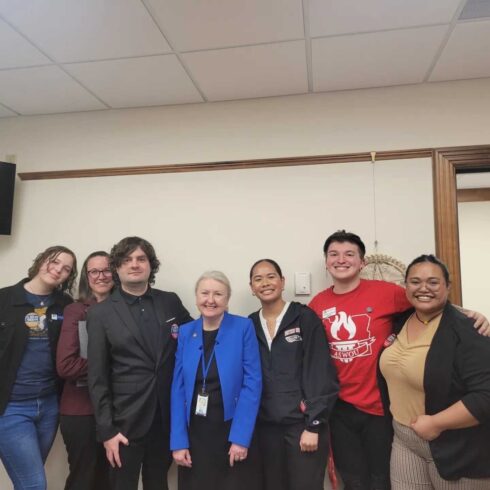Editor’s Note: “Rethinking SOU” is a multi-part series that will focus on two “change processes” happening this year at Southern Oregon University spearheaded by President Mary Cullinan. One is called “Houses,” and it will change how students satisfy their general education requirements. For more information on the proposed Houses, go to www.sou.edu/vision.
Finding students who want to attend Southern Oregon University is not difficult. But keeping them on campus past their freshman year has become an enrollment problem. According to SOU President Mary Cullinan, about one third of students will leave SOU before their sophomore year.
“We have realized that higher education in the United States needs to dramatically change,” she says.
Cullinan says some of the problem is money: states are disinvesting in higher education and passing more of the cost on to students. Part of the problem is time: university calendars are based on the 19th-century agrarian calendars – nine months on, three months off – that has nothing to do with how students live and work now.
However, Cullinan says, the biggest issue in retaining students is a lack of engagement or connection that students have with the campus and their education. The question that the administration is asking itself is, “What do we need to do differently?”
One of the answers to that question is the new “Houses” program. With a target start date for the pilot program of fall 2013, the program is a drastic change to what students are currently used to. The houses will follow a theme, focused around a problem. Rather than taking a random smattering of general education classes, students in the Houses program will take classes that provide the academic tools to help solve the problem that their house is tasked with solving.
“Think of it as an umbrella,” says Jody Waters, associate professor and chair of the Communication department. Basic classes in math, science, writing and research will be taught with one central focus, by a team of professors, with classmates who share the same interests.
If the Houses can engage students, then they have a better chance of staying and graduating from SOU. If more students stay, the university will have a more consistent stream of revenue, and that might help keep down the cost of tuition. And, if tuition stays affordable, that can help students stay.
“I’m still paying off my tuition for the one year I went there,” says Kelly Christopferson, a former student who left the university in June of 2011, after her freshman year.
Other students who transferred to other universities have different opinions on the effect a program like the Houses would have had on their decisions to leave.
Blair Lindberg also left SOU in June of 2011 after his sophomore year. He is now a senior at the University of Oregon, where he says the video program there is a better fit for him. He says he is unsure about the idea of Houses, feeling that it might lock students into a route of study before they are sure of what they want. “I think that ‘gen eds’ help you figure out what you want to do and gain general knowledge,” Lindberg says. “The House idea sounds like it would be a better fit for upper division classes.”
Mikayla Laufer, now a sophomore at Northern Arizona University, left SOU after her first term in the fall of 2011. “I didn’t feel like I was at college at SOU,” she says. “It’s such a small school in such a small town with so few programs that I felt I was in high school.” But Laufer is enthusiastic about the Houses project. “I think it would have made the decision to leave a little more difficult.”
Though the Houses program is still in the blueprint stage, Cullinan strongly believes that the future of classrooms will be different.
“We’re going to be using classrooms to apply what we learned as opposed to using them to lecture to students,” she says. “This is a way to help transform SOU into a school that’s going to work better for the 21st century.”

